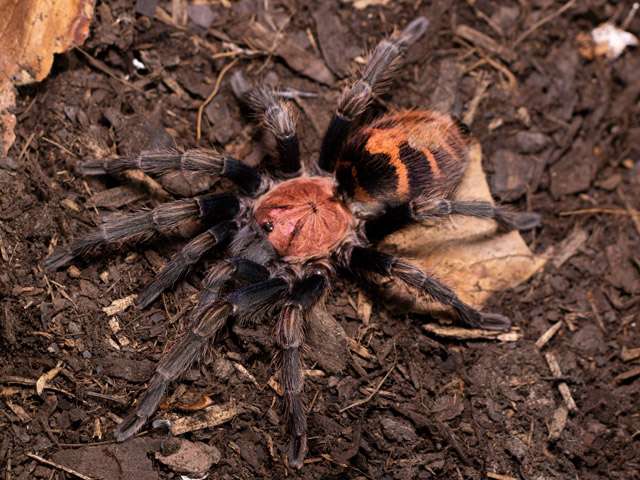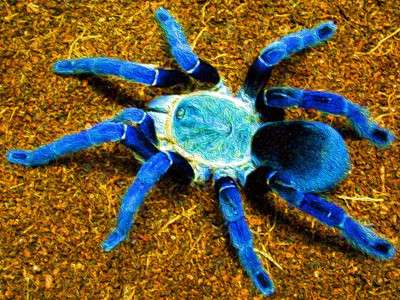
A species of New World tarantula (family Theraphosidae) called Davus pentaloris is indigenous to Mexico and Guatemala. Davus’ species were once assigned to the genus Cyclosternum since it was once thought to be a synonym, but this is no longer recognized.
High morphological variety has been seen in D. pentaloris across its extensive territory. This led to the hypothesis of hidden diversity within the species, with the high morphological variation suspected to be evidence that D. pentaloris is actually a species complex. Tarantulas typically have a low capacity for dispersal and are consequently associated with high levels of local endemism.
Appearance
Abdomen and Carapace
Due to its shiny copper carapace and striped abdomen that mimics a tiger’s stripes, D. pentaloris has a distinctive appearance. Their torsos vary slightly in color, typically wearing vivid pink hues that stand out sharply against their black prissy hair.
Hairs
The Davus pentaloris has fine hairs covering every inch of its legs and abdomen as a protection against predators.
Size
D. pentaloris is a relatively little tarantula compared to other species, with a maximum leg span of just 4 inches. Due to their shorter bodies and longer legs, males appear even smaller.
Although they start off extremely little, spiderlings keep a lot of their colors and patterning, and they mature into adults rather quickly. Male specimens have a maximum lifespan of 4 years whereas females can live up to 11 years.

Diet
The Guatemalan tiger rump tarantula grows quickly and in just over a year will be about two inches long. Spiderlings that are still developing do well on flightless fruit flies, but once they are 1/2″ in length, they can switch to pinhead crickets. This tarantula can consume four adult crickets weekly as an adult.
Habitat
Found in Guatemala and Mexico. It thrives in warm, moderate areas with six continuous months of rain and a lot of bush cover.
Social interaction
Because D. pentaloris is an antisocial animal, any attempts at cohabitation are likely to end in cannibalism.
Breeding
Spiders should only be attempted to reproduce when they are well-fed and under close supervision while they are together. For courtship/mating, mature males can be placed in a mature female’s enclosure. Remove the male as soon as the insertion is noticed, or as soon as the female becomes hostile rather than receptive. A freshly molted female is less likely to molt out of a partnership, therefore it is preferable to do this about a month after she does.
Things to consider when keeping as pet
The ideal temperature range for them is between 75 and 80 degrees. For the spider’s lifetime, temperatures that are constantly below 65 degrees or above 90 degrees should be avoided. To maintain a 75%–80% humidity level, dampen the substrate equally. Age: 2 months or more at the time of sale.
Table





